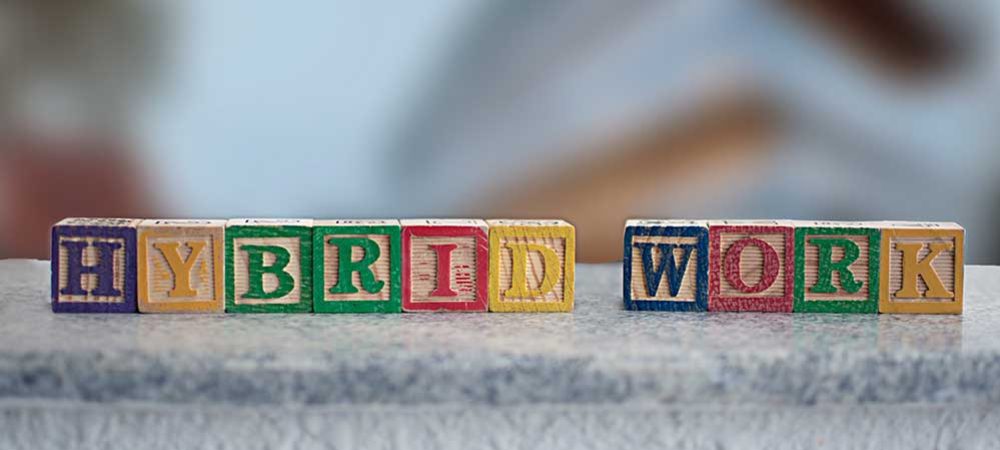Creating a culture of collaboration has been one of the most challenging aspects of the pandemic for businesses as employees adjusted to working from home. Rob Walker, UK&I MD, Cognizant, discusses how business leaders have had to adapt their management strategies to meet employee expectations and make their workspaces more appealing to the modern-day worker.
At this stage in the game, any business leader with a sensible head on their shoulders now recognises that hybrid working is unavoidable – it’s what employees want and it’s what they’re going to get, even if it means resigning and heading elsewhere. Now though, companies have to figure out how to make it work. This means being able to accommodate employees’ unique needs and preferences, as recent Cognizant research has shown that the new generation of workers values passion for the work they do (59%) and a healthy work-life balance (53%) over money (49%) – so a simple salary increase isn’t going to make the cut.
That same research, though, also found a widening gap between what staff expect from employers and what businesses are actually delivering. But as older millennials reach their early 40s and GenZ join the job market, the career moves of these ‘purpose-led’ generations are becoming central to businesses’ ongoing viability.
This compounded with the pandemic-induced evaluation of our life and career choices that many have encountered in recent months has led to what has now widely become known as ‘the great resignation’. The trend of employees handing in their notices in the masses is in itself an unusual one, but its consequences are perhaps more unexpected. We now live in a world in which the power is firmly in employees’ hands. Never before have there been so many vacancies and as such, so many choices and opportunities for individuals – many of which are considered sought-after talent – to choose from.
Moving beyond water cooler moments
Of course the hybrid element of this new working world means the office still very much plays an important role for most businesses, even if the five-day a week commute is a thing of the past. And while many of us now value the ability to work from home regularly, whether its to spend more time with our families or simply get a lie in, fond memories of the office and the culture and sociability it can offer are quickly being evoked as more of us walk back through the doors.
This alone though isn’t enough. If businesses want employees back in the office on a regular basis, whether for one, two or more days a week, they are going to have to put some effort in to make it appealing. This means moving away from investments in office spaces with traditional banks of desks. Employees don’t just want water cooler moments, they want memorable ones and I’m sure we can all agree that fetching a glass of water in the middle of the day isn’t as exciting as it once sounded.
Businesses must strive to create collaborative environments and ones that span employees’ work needs and personal preferences. Maybe it’s a gym or a roof terrace, but on a more strategic level, it might be about encouraging employees in on different days so they have the opportunity to meet and engage with a wider pool of colleagues. All of these kinds of initiatives will be crucial for reigniting the innovation that was lost during the pandemic, somewhere in a Zoom sound wave.
Changes must be made to make hybrid work
Alas, perhaps the biggest challenge for businesses moving forward will be the ability to get the virtual side of their working models right, and enabling the two halves of the hybrid world to merge seamlessly. To date, most are still familiar with the difficulty of speaking to a meeting room full of people, from home. Despite many businesses’ best efforts to invest in more sophisticated meeting room technology, the fact is none have found a way to make it work. So, we need to move beyond offering simple video tools. This will see the likes of Slack and Zoom evolving to offer more sophisticated features, while new startups will enter the market offering entirely new and disruptive solutions.
In the meantime, we can expect that many business leaders will already be exploring how they can implement Virtual and Augmented Reality tools (collectively known as ‘extended reality’ or XR) to shift remote collaboration from a flat, one-dimensional experience into a multi-dimensional one. By equipping employees with anything from AR or VR head-mounted displays (HMD), to gaming-like consoles, to a browser-based enterprise ‘metaverse’, businesses can pave the way to more natural, productive, inclusive and more engaging ways for workers to interact, wherever they are geographically.
By adopting XR, employees sharing a virtual space can be together, even when they’re not. This means moving around, making eye contact and using body language – all crucial parts of human communication that can be vital for conveying messages. Moreover, it can bring those working remotely into a ‘physical’ workspace, helping to overcome the issue of proximity bias by reducing any advantage or disadvantage an individual may have based on location, by merging into the geometry of a meeting seamlessly.
The business power hold
What we’re seeing now is a power hold. Employees have seen an opportunity to make their work, work for them, and they’ve seized it. It’s left businesses on the back foot. But they do have the opportunity to take back control, only if they’re willing to adapt. Changes must be made if organisations are to secure the talent they need for a bright, successful and innovative future. This means making hybrid work for everyone and involves spending time and money on making the office and virtual worlds work seamlessy together.
Click below to share this article

